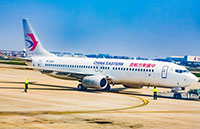Robots make their mark in restaurants, canteen kitchens
By Cheng Yingqi (China Daily) Updated: 2013-01-04 03:31At a noodle restaurant in Xiamen, a new chef repeatedly shaves dough into a boiling wok with efficiency and precision. A human simply wouldn't be able to keep up.
The robot shaver, capable of making four bowls of noodles a minute, is also inexpensive.
"A human shaver costs me at least 2,000 yuan ($321) a month, but the robot, working 10 hours a day, only costs 3 kilowatt-hours of power," said Zheng Guozhao, owner of the restaurant, on the campus of Xiamen University of Technology in East China's Fujian province.
"In a year, the money saved from hiring cooks will be enough to buy two more robots."
The robot, named Ultraman, after the Japanese cartoon hero, attracts large crowds of sightseers, Zheng said, adding that before he installed it, business had been mostly flat.
Noodle robots like Ultraman have also helped business boom for restaurants in Tianjin in North China, in Guangzhou in South China's Guangdong province, and in Liaoyuan, Jilin province, in Northeast China.
Automatic kitchen devices are also becoming popular in many restaurants in various forms, such as barbecue and kebab-making machines.
Bi Yalei, director of technology at the Shenzhen Institutes of Advanced Technology of the Chinese Academy of Sciences, said, "Most people think robots should have a humanoid look, otherwise they are just machines, but this is not right. Actually, we're already using robot technologies in many home appliances and machines, and robots serve our daily lives in different ways."
He said one example is a dispensing robot being designed by his institute. The machine can follow dispensing guidelines and combine different herbs to make Chinese traditional medicine at drugstores.
"The robot looks more like a medicine cabinet than a pharmacist, but it is skilled in dispensing, even better than a human," Bi said.
In people's homes, some appliances with interactive features, such as smart TVs, use robot technologies.
Bi said the Shenzhen Institutes of Advanced Technology is developing more than 100 principle prototypes to be used in the home, including robot pets and robots that help disabled people to walk.
The robot market in the future could surpass that for cars, covering military, manufacturing and service industries, Bi said.
"The Asia-Pacific region will be the potential market for service robots, given its large population," he said. "And robots integrated with home appliances, communication devices and medical rehabilitation will be our distinguishing features."
Contact the writer at chengyingqi@chinadaily.com.cn
- Ramos dines with senior lawmaker
- Explosion in Hubei power plant leaves 21 dead, 5 hurt
- Beijing to adopt new residential permit system in October
- Beijing says it would welcome a Ramos visit
- Nuclear processing site suspended
- Women married to gay men struggle to break free in an unsympathetic system
- China applauds repatriation of telecom fraud suspects from Kenya
- Accounts used by officials to cover up bribes are eliminated
- Type-96B seen as pillar of nation's tank force
- G (irls) 20 promotes more and better jobs for women










